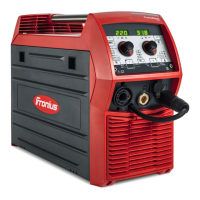Obligations of the
Operating Com-
pany
The operating company must only allow persons to work with the device if they
- Are familiar with the basic occupational safety and accident prevention regulations
and are trained in handling the device
- Have read and understood these Operating Instructions, especially the section
"Safety Rules," and have confirmed this with their signature
- Are trained according to the requirements for the work results
The safety-conscious work of the personnel must be checked regularly.
Obligations of
Personnel
All persons who are assigned to work with the device must do the following before begin-
ning the work:
- Follow the basic regulations for occupational safety and accident prevention
- Read these Operating Instructions, especially the section "Safety Rules," and con-
firm that they have understood and will follow them by signing
Before leaving the workplace, ensure that no personal injury or property damage can
occur in one's absence.
Residual current
circuit breaker
Local regulations and national guidelines may mean that a residual current circuit
breaker is required when connecting a device to the public grid.
The residual current circuit breaker recommended for the device by the manufacturer
can be found in the technical data.
Personal Protec-
tion and Protec-
tion of Others
You are exposed to numerous hazards while handling the device, for example:
- Flying sparks and pieces of hot metal
- Arc radiation that poses a risk of injury to the eyes and skin
- Hazardous electromagnetic fields that pose a risk of death for individuals with pace-
makers
- Electrical risks from grid current and welding current
- Increased noise exposure
- Harmful welding fumes and gases
Wear suitable protective clothing when dealing with the device. The protective clothing
must have the following properties:
- Flame resistant
- Insulating and dry
- Covering the entire body and in good condition with no damage
- Safety helmet
- Cuffless pants
Protective clothing involves the following:
- Protecting the face and eyes from UV radiation, heat and flying sparks with a face
guard featuring a regulation-compliant filter
- Wearing regulation-compliant protective goggles with side protection behind the face
guard
- Wearing rigid, wet-insulating footwear
- Protecting hands with appropriate gloves (featuring electrical insulation and thermal
protection)
- Wearing ear protection to reduce noise exposure and protect against injury
9
EN-US

